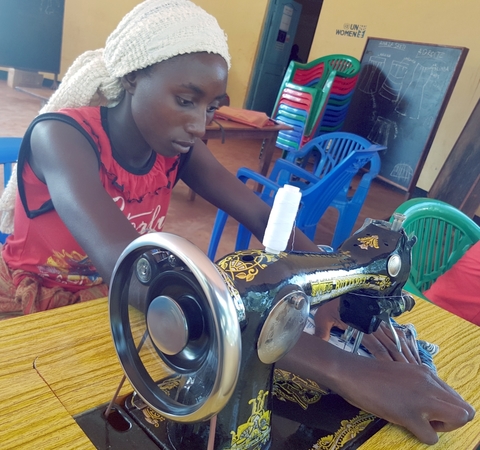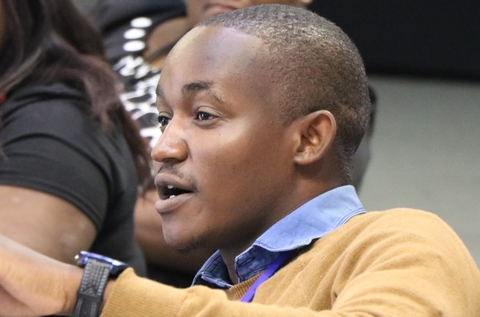JOHANNESBURG, South Africa—“Sexual assault and embarrassment are the risks that adolescent girls face when dealing with menstruation hygiene in emergency settings, due to the lack of separation between male and female sanitation facilities.”
In an emergency setting, no one thinks of adolescent sexual and reproductive health and rights as one of the priorities.
“In an emergency setting, no one thinks of adolescent sexual and reproductive health and rights as one of the priorities,” said Palesa Lefojane, a member of the United Nations Youth Advisory Panel in Lesotho.
“Times of exclusion should be over if ever we want a better tomorrow. Our governments should start viewing us as an asset and not a liability.”
She was speaking at a three-day workshop to equip youth representatives from eight southern African countries with knowledge and skills on youth participation in humanitarian contexts, and peace and security. The event was organized by UNFPA East and Southern Africa Regional Office, in collaboration with UNFPA New York and the World Organization of the Scouts Movement.
Adolescent girls at double disadvantage in emergencies

Kigoma, Tanzania. Out of 23 countries in East and Southern Africa,
11 are at high to very high risk of a humanitarian emergency -
including Burundi. © UNFPA Tanzania
Emergencies heighten the risks and worsen the vulnerabilities of young people. In particular, adolescent girls – who are often already at a disadvantage due to gender discrimination – must overcome not only the crisis itself, but also potential abuse, violence and exploitation, which can compromise their development, violate their rights and undermine their future and the future of their country.
In spite of all these challenges, young people including adolescents can be extremely resilient and resourceful. Their dynamism and energy are assets that make them active and important agents of positive change, who are able to drive peace and security in their communities.
In East and Southern Africa, the risk of emergencies is high. Eleven out of 23 countries – Burundi, Democratic Republic of the Congo, Eritrea, Ethiopia, Kenya, Madagascar, Mozambique, Rwanda, South Sudan, Tanzania and Uganda – are at high to very high risk of a humanitarian emergency (INFORM Index 2017).
Because a relatively high proportion of the population in the region consists of young people, they stand to make a substantial contribution during emergencies.
About 40 per cent of the 1.4 billion people living in countries impacted by crises globally are under the age of 15. Adolescents aged 10 to 19 years make up a significant proportion of the population in many conflict and post-conflict settings.
“Youth a critical component in peace building”
I will be sharing this knowledge with youth groups that deal with sexual and reproduction health and rights, and other key populations.

and promotion." - Lovejoy Mutongwiza, a journalist from 263Chat in
Zimbabwe. © UNFPA ESARO/Sven Meela
Protecting and addressing the rights and needs of young people, including adolescents, and engaging them in their unique capacities, is vital in humanitarian preparedness, response and recovery. Creating a strategic youth engagement plan is essential to involve and empower youth in the implementation of humanitarian preparedness and response mechanisms.
“The workshop was an eye opener for me because I learned how youth are a critical component in peace building. It is imperative to include us in all the stages of peace building and promotion, as we are part of the widely affected population,” said Lovejoy Mutongwiza, a journalist from 263Chat in Zimbabwe.
“Back in my country, I will be volunteering to share this knowledge with targeted groups, which include youth groups that deal with sexual and reproduction health and rights, and other key populations,” he said.
Supporting young people’s role in building sustainable peace
UNFPA, building on its comparative advantage of working with and for young people in development and humanitarian settings, plays a significant part in supporting young people’s role in building sustainable peace.
The aim of the workshop was to boost youth-led organizational capacity for and involvement in preparedness and humanitarian response, including building the resilience of young people, as well as social cohesion, peace-building and conflict prevention.
By Aimee Manimani Nsimire



